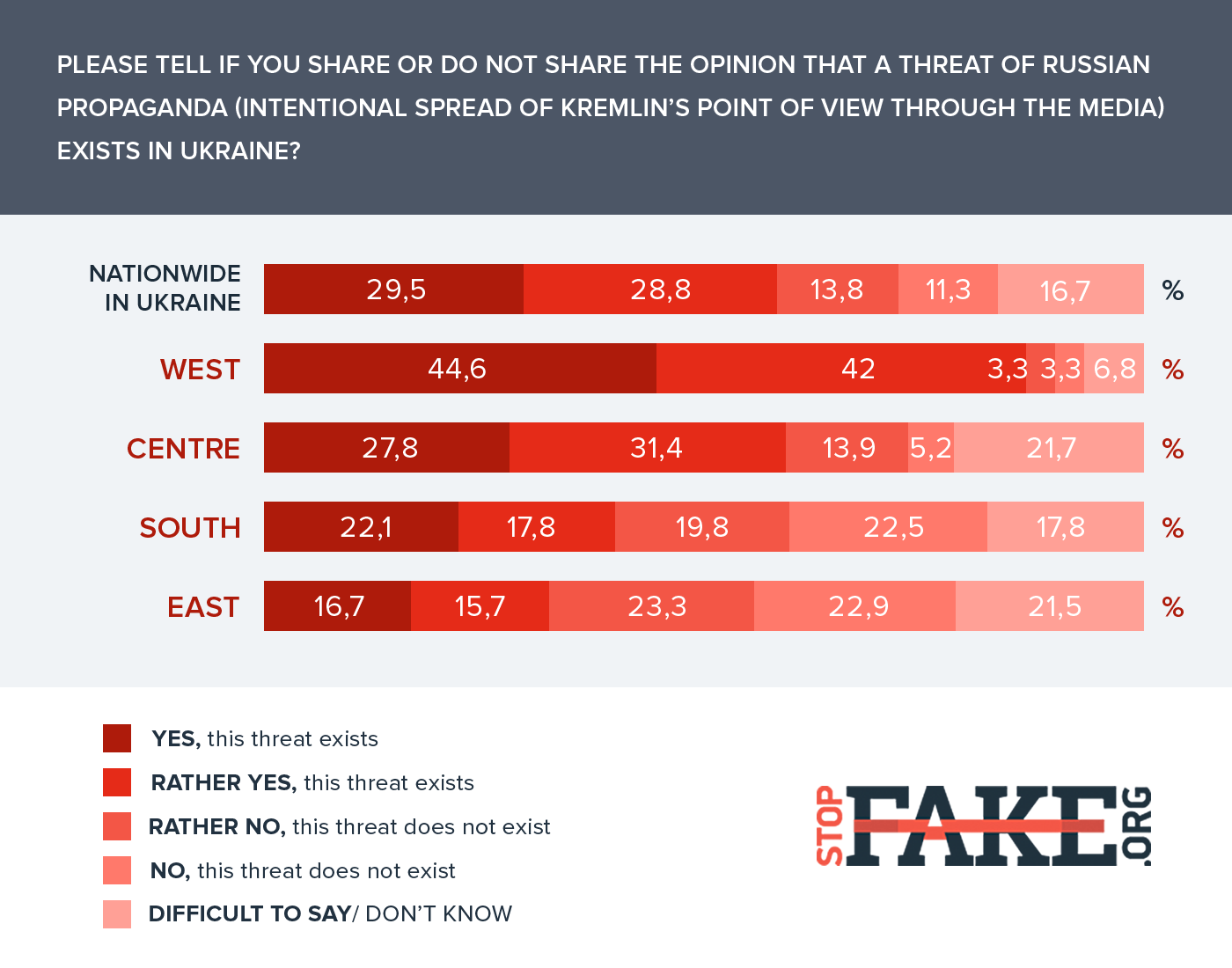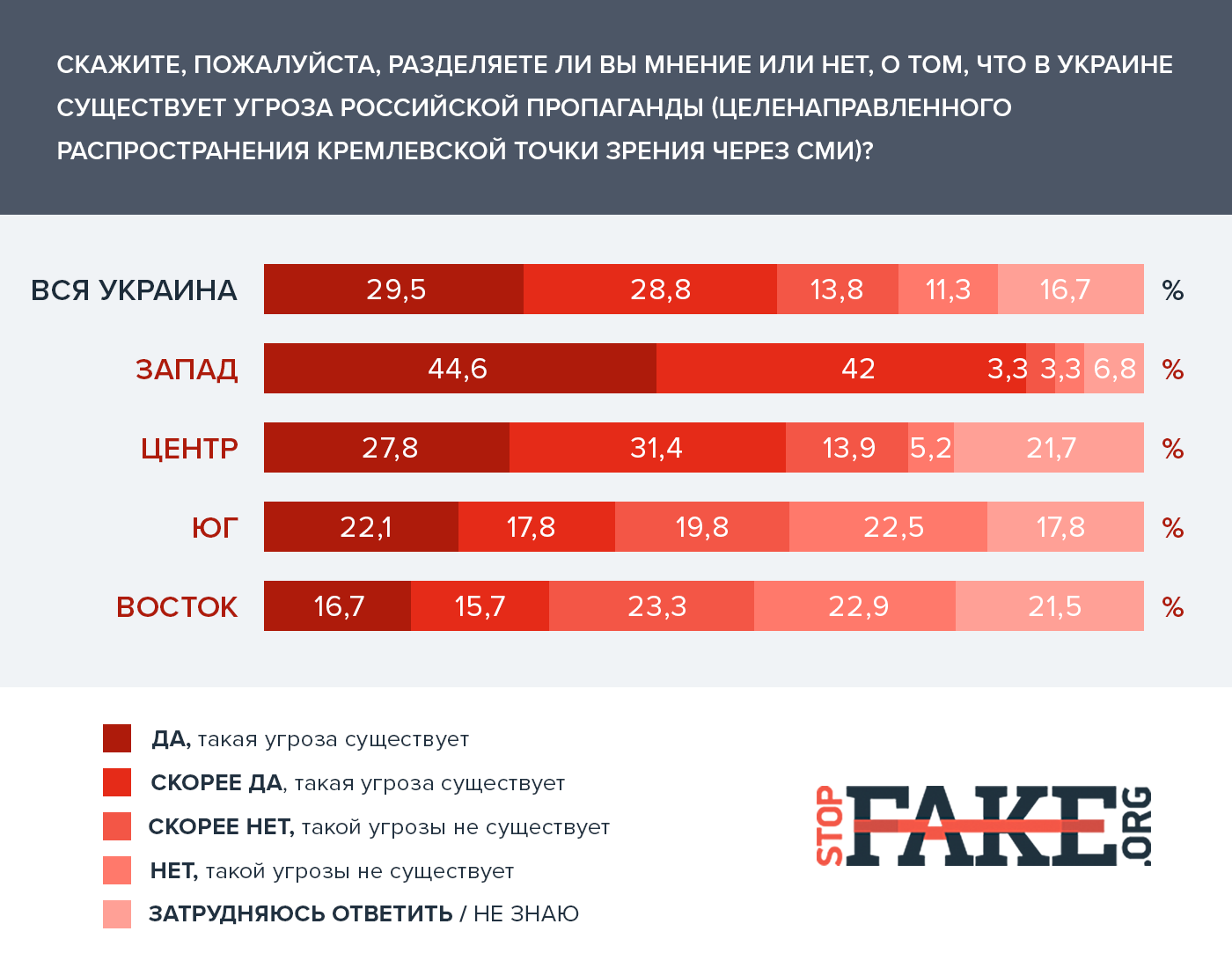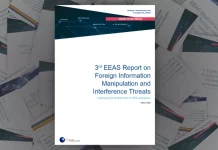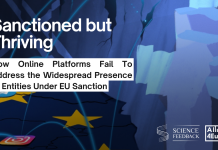
The research goal of the StopFake project was to find out the level of awareness and attitude of Ukrainian citizens regarding the problems of disinformation, informational manipulations and propaganda in the media.
Research consisted of two parts: representative opinion poll and focus group discussions. The reason for this type of research design was the need to determine general tendencies in attitudes and opinions of the population towards the problems defined, on the one hand, as well as to find out the specifics of perception of these problems by Ukrainian citizens, on the other hand. Thus, the national opinion poll helped us to acquire a sociological snapshot regarding the attitudes and assessments concerning the disinformation and propaganda problem, while focus group discussions helped to explore the perception of information by citizens, the specifics of their informational consumption, as well as their trust towards the media.
The survey was conducted by Kyiv International Institute of Sociology at the request of the StopFake project, with financial support from the British Embassy in Ukraine, in February-March, 2017. The field stage of the opinion poll took place from February 10 to 20, 2017. The poll was conducted in 110 settlements (PSU) in all regions of Ukraine, except for the Autonomous Republic of Crimea. In Donetsk and Luhansk regions the poll was conducted only on territories controlled by Ukraine. As a result of the field stage, 1020 questionnaires were collected.
Two focus groups were held in the Donetsk region (in the towns of Kramatorsk and Bakhmut). These towns were selected for focus groups because of the unique susceptibility of the regional population in the context of informational influence. In total, 19 respondents participated in the discussion, 50/50 men and women, aged 18-65, of various educational levels, various professions and employment status.
Main findings of the research (opinion poll)
- A majority of Ukrainian citizens (58,3% of the respondents) share the opinion that there is a threat of Russian propaganda in Ukraine. Only a quarter of the respondents believe that there is no such threat. However, this indicator is higher among the representatives of Southern and Eastern macro-regions (42,3% and 46,2% respectively). The share of the population, who find it difficult to answer this question, is quite high – 16,7% of the total number of respondents (21,7% in the central macro-region, 21,5% in the eastern one).
- Among the most widely spread sources of Russian propaganda, the Ukrainians named Russian TV channels, Russian online media and social networks (45%, 34,5% and 19,8% respectively). At the same time, it is important to note that a significant part of respondents was not able to answer that question (28,7%), which demonstrates quite a high level of uncertainty about those issues. This indicator was especially high in southern and eastern macro-regions (37,7% and 51,7% respectively).
- 42,1% of the respondents believe that disinformation is in general a serious problem for Russian media; 33,8% of the respondents believe that this problem is also serious for Ukrainian media. Only 13% do not see this problem in the Russian media. 17,3% of respondents believe that the problem is not a major problem in general for Ukrainian
- The overwhelming majority of Ukrainian population, namely 59,7%, believe that they are able to distinguish truthful information from false information in the media, while 22,5% are not sure about being able to make this distinction. It is important to note that this indicator is relatively equal for different regions. In comparison to other research questions, in this case, more uncertainty about one’s own ability was demonstrated by the residents of western and central macro-regions. 24,5% of the respondents from the western region and 17,8% of the respondents from the central region were not able to answer this question. In the south and in the east this indicator was 11,1% and 16% respectively.
- 42,1% of the respondents replied that they noticed the cases of false information in the media within last week. Nearly the same number of respondents (39,4%) did not notice such occasions. Nearly one in five respondents was not able to answer this question. The smallest number of disinformation cases was noticed by the residents of southern macro-region (31,2%), while the largest number was noticed by the residents of the eastern macro-region (48,1%).
- In their assessment of false information, according to respondent answers, most of all they rely on verifying information from other sources (46,3%), on debunking this information by friends/relatives/colleagues (34,5%) and their own intuition (30,4%). The biggest regional differences were registered regarding the debunking information by friends/relatives and one’s own intuition. Thus, respondents from the central macro-region showed they are inclined the most to rely on debunking by relatives and friends (45,5%); this indicator was slightly lower for representatives of the western macro-region (36%), and much lower for respondents from the southern region and is the lowest in the east of the country (15,2% only). The residents of the central macro-region also trust their own intuition most of all (40,8%).
- Nearly one third of respondents feel the need for additional knowledge and skills to identify information and propaganda, but the majority of respondents (58,4%) replied that do not feel the need for that. The biggest need for additional knowledge was expressed by residents of the western macro-region (44,8%), the smallest – by representatives of the eastern region (18%). This figure is nearly the same for the central and southern region (25,7% and 24,3% respectively).
- Please identify if you share or do not share the opinion that a threat of Russian propaganda (intentional spread of Kremlin’s point of view through the media) exists in Ukraine?
| Nationwide
in Ukraine |
West | Centre | South | East | |
| Yes, this threat exists | 29.5 | 44.6% | 27.8% | 22.1% | 16.7% |
| Rather yes, this threat exists | 28.8 | 42% | 31.4% | 17.8% | 15.7% |
| Rather no, this threat does not exist | 13.8 | 3.3% | 13.9% | 19.8% | 23.3% |
| No, this threat does not exist | 11.3 | 3.3% | 5.2% | 22.5% | 22.9% |
| DIFFICULT TO SAY/ DON’T KNOW | 16.7 | 6.8% | 21.7% | 17.8% | 21.5% |
- In which way, in your opinion, is Russian propaganda (intentional spread of Kremlin’s point of view through the media) spread in Ukraine most actively? NO MORE THAN 2 ANSWERS POSSIBLE.
| Nationwide
in Ukraine |
West | Centre | South | East | |
| Through Russian TV channels | 45.0 | 67.2% | 41.7% | 35.6% | 26.5% |
| Through Russian online media | 34.5 | 40.1% | 35.3% | 30.5% | 28.2% |
| Through Ukrainian national media | 6.0 | 8.7% | 5.2% | 5.8% | 2.9% |
| Through Ukrainian local media | 3.2 | 1.7% | 5.6% | 2.5% | 0.9% |
| Through social media | 19.8 | 23.2% | 22.6% | 16.4% | 11.6% |
| Through Russian films/TV series | 5.8 | 10.9% | 6.2% | 0.7% | 3.8% |
| Other | 1.8 | 2.2% | 1.3% | 2.1% | 1.4% |
| DIFFICULT TO SAY/ DON’T KNOW | 28.7 | 8.4% | 29.3% | 37.7% | 51.7% |
- Please tell us if the problem of disinformation (knowingly false information) is, or is not, a major problem for Russian media in general?
| Nationwide
in Ukraine |
West | Centre | South | East | |
| No, it is not a problem | 7.0 | 10.2% | 5.8% | 5.7% | 6.2% |
| Rather no, it is not a problem | 6.0 | 6.9% | 5.7% | 6.2% | 4.7% |
| Equally, partially yes, partially no | 19.8 | 13.9% | 25.6% | 17.7% | 21% |
| Rather yes, it is a problem | 19.6 | 21.4% | 18.1% | 18.7% | 22.1% |
| Yes, it is a problem | 22.5 | 30.2% | 22.1% | 21.3% | 10.1% |
| DIFFICULT TO SAY/ DON’T KNOW | 25.0 | 17.5% | 22.7% | 30.5% | 35.8% |
- Please tell us if the problem of disinformation (knowingly false information) is, or is not, a major problem in general for Ukrainian media?
| Nationwide
in Ukraine |
West | Centre | South | East | |
| No, it is not a problem | 7.7 | 7.5% | 4.8% | 13.5% | 4.4% |
| Rather no, it is not a problem | 9.6 | 10.8% | 11.5% | 6.9% | 6.9% |
| Equally, partially yes, partially no | 31.4 | 31.2% | 38.0% | 27.2% | 22.3% |
| Rather yes, it is a problem | 21.6 | 21.3% | 21.6% | 18.8% | 27.5% |
| Yes, it is a problem | 12.2 | 18.7% | 4.9% | 14.2% | 14.8% |
| DIFFICULT TO SAY/ DON’T KNOW | 17.6 | 10.5% | 19.3% | 19.4% | 24.1% |
- In your opinion, are you able or not to distinguish true information from false in the media?
| Nationwide
in Ukraine |
West | Centre | South | East | |
| Yes, I am able | 22.1 | 18.8% | 22.9% | 23.9% | 23.6% |
| Rather yes, I am able | 37.6 | 35.8% | 41.4% | 33.9% | 38.6% |
| Rather no, I am not able | 14.9 | 16.3% | 11.7% | 20.4% | 10.4% |
| No, I am not able | 7.6 | 4.7% | 6.2% | 10.8% | 11.4% |
| DIFFICULT TO SAY/ DON’T KNOW | 17.7 | 24.5% | 17.8% | 11.1% | 16% |
- Have you noticed or not noticed cases of false information in the media within the last week?
| Nationwide
in Ukraine |
West | Centre | South | East | |
| Yes, I have noticed | 42.1 | 46.8% | 44.1% | 31.2% | 48.1% |
| No, I have not noticed | 39.4 | 37.5% | 36.8% | 50.6% | 28.7% |
| DIFFICULT TO SAY/ DON’T KNOW | 18.5 | 15.7% | 19.1% | 18.2% | 23.2% |
- How did you find out that the information was false? MULTIPLE ANSWERS POSSIBLE
| Nationwide
in Ukraine |
West | Centre | South | East | |
| By verifying information in other sources | 46.3 | 54.7% | 37.8% | 47.9% | 48.4% |
| By hearing debunking in a different media outlet | 27.7 | 32.4% | 25.2% | 31.8% | 19.6% |
| By hearing debunking from relatives/friends/colleagues | 34.5 | 36% | 45.5% | 25.9% | 15.2% |
| Relying on intuition | 30.4 | 21.5% | 40.8% | 31.4% | 21.1% |
| Other | 1.8 | 0.8% | 1.8% | 4.8% | |
| DIFFICULT TO SAY/ DON’T KNOW | 0.7 | 1% | 1.4% | 0.8% |
- Do you or do you not feel the need for additional knowledge and skills to identify disinformation (knowingly false information) and/or propaganda (intentional information manipulation) in the media?
| Nationwide in Ukraine | West | Centre | South | East | |
| Yes, I feel this need | 29.5 | 44.8% | 25.7% | 24.3% | 18% |
| No, I do not feel this need | 58.4 | 42.7% | 62% | 64.2% | 69.6% |
| DIFFICULT TO SAY/ DON’T KNOW | 12.1 | 12.5% | 12.3% | 11.5% | 12.4% |
Main findings of the research (focus groups, Donetsk region)
- Mostly the research participants receive information from many sources, both from the mass media and from someone they know personally. Basic and primary source of information is, as a rule, the mass media (most frequently, it is television and the Internet). After that the information received can be discussed or checked in conversations with friends. There is an observed tendency: young people primarily get information from the Internet, middle-aged people mostly watch the news and get information both from television and the Internet, while elderly people prefer television.
- Main reasons why people watch the news on one TV channel or another are: they like the way information is presented, the TV hosts, informational content, reasoned news. Some participants noted that they watch the news on a TV channel, which broadcasts the news at a time convenient for them, or they watch the news along with other TV programs on a TV channel.
- The reasons that participants read the news on a particular web-sites are information on something they are interested in, the news appears fast, option of comments and discussion, neutral and impartial orientation, visual design and convenient news search. There is a wide-spread tendency toward major consumption of local news from online resources (local news web-sites, topical groups in social media). Reading the news on news aggregators is also wide-spread (in particular, Yandex). At the same time printed publications are not the main source of information for participants of the research.
- A majority of participants from the discussion do not have complete and outright trust in any information source they use, since they have no opportunity to verify information personally, or they notice a mismatch between what they experienced personally and the way the event was covered in the media. In general, participants are mostly prone to trust information from informal sources, i.e. accounts of people and witnesses and their own experience.
- The factors that increase the trust towards the news in the media are the availability of evidence and testimony; involving the experts; feedback and comments by people and witnesses; possibility to verify information personally or matching information and personal experience; trust towards the speaker.
- Many focus group participants, both elder and young, noted that after 2014 they became more interested in the news and are more critical to information they receive. Most participants perceive changes in the Ukrainian media after 2014 as negative. Many of them believe that since 2014 Ukrainian media has become more censored. Participants in Bakhmut noted that they do not like the “obsessive Ukrainization” on Ukrainian TV channels after 2014. The use of Ukrainian according to alternative spelling proves to be especially annoying.
- Previously participants did not watch the news on Russian channels; after 2014 some people started to watch Russian TV channels online to compare the presentation of events by Ukrainian and Russian media. All participants who watched or heard the news about Ukraine on Russian TV channels agreed that Russian TV channels presented information in a considerably different way as compared to the presentation of the same events on Ukrainian TV channels. Moreover, Russian TV channels often assign a negative connotation to that information. However, information controversy makes participants mistrust all the sources, both Ukrainian and Russian.
- Most participants are not satisfied by the quality of information in the media. Despite an abundance of information, most of it is of a low quality, meaningless or not detailed enough. According to their words, participants lack positive and valid information the most.
- Most of the focus group participants do not believe that information in Ukrainian media is completely true. They are convinced that false information appears in the media for a reason. The reasons why Ukrainian media provide false information, in participants’ opinion, are censorship, state control, financial interests of the oligarchs who own the media outlets, public opinion manipulation, distracting attention from real problems, business wars or political confrontation between media owners, patriotic upbringing and propaganda.
- There are mixed feelings about Russian media. Some participants tend to believe there is the same amount of truth on Russian TV channels as on Ukrainian ones. Some participants believe that the news about events in Ukraine are one-sided and negatively exaggerated on Russian TV channels, and that is why they cannot be perceived as a faithful representation of the situation in Ukraine. The reasons why Russian media provide false information on the situation in Ukraine are informational war; inciting conflict; shaping public opinion in the direction favourable for Russian authorities; patriotic upbringing.
- Most participants, especially of the middle and younger age, have heard of the concept of a ‘fake’ and understand it. Nevertheless, the concept of a fake is unusual for many of them. All participants, even the youngest ones, noted that they do not use it in everyday language and consider it slang of young people and teenagers.
- The concept of ‘propaganda’ is clear for most participants, especially of the middle and older age. In general, according to participants, propaganda means promotion of an idea, information with certain purposes; imposing a viewpoint, shaping of individual views; one-sided presentation of information from a favourable angle, lobbying of their own opinions; a way to manipulate public opinion.
- In participants’ opinion, there is a lot of propaganda in both Ukrainian and Russian media, but they tend to believe it is more abundant in Russian mass media. The main themes of both Ukrainian and Russian propaganda, as participants believe, are patriotic upbringing (‘Ukrainian nationalism’ in Ukraine, ‘Russian nationalism’ in Russia) and inciting hostile attitude towards each other (towards Russia in Ukraine, and towards Ukraine in Russia). The difference noticed by participants is that Russian propaganda is never critical of its own country, whereas Ukrainian news can show negative information about both Ukraine and Russia.
- The vast majority of participants admit that quite often it is complicated or impossible for them to identify whether information in the media is truthful or not. Some of them try to verify information (by means of searching in various sources or discussing with friends). Still, many of them identify the validity of information by intuition, according to whether it matches their previous experience, knowledge, or situation they observe in life.
- An absolute majority of participants were able to remember situations when information published by the media turned out to be false. Usually, participants cited examples when information in the media did not match what they witnessed (for instance, news of an attack on their town when nothing was happening there). Some participants stumbled upon fabricated the news about the war in Donbas, and later saw the debunking of those news stories online (photos taken from Chechnya, Afghanistan, dummy actors etc.).
- An absolute majority of participants agree that the problem of false information in the media is very urgent. Nevertheless, the overwhelming majority of respondents would like to receive true information only and would like to have a source they could trust without verifying, rather than learn how to distinguish false information.





